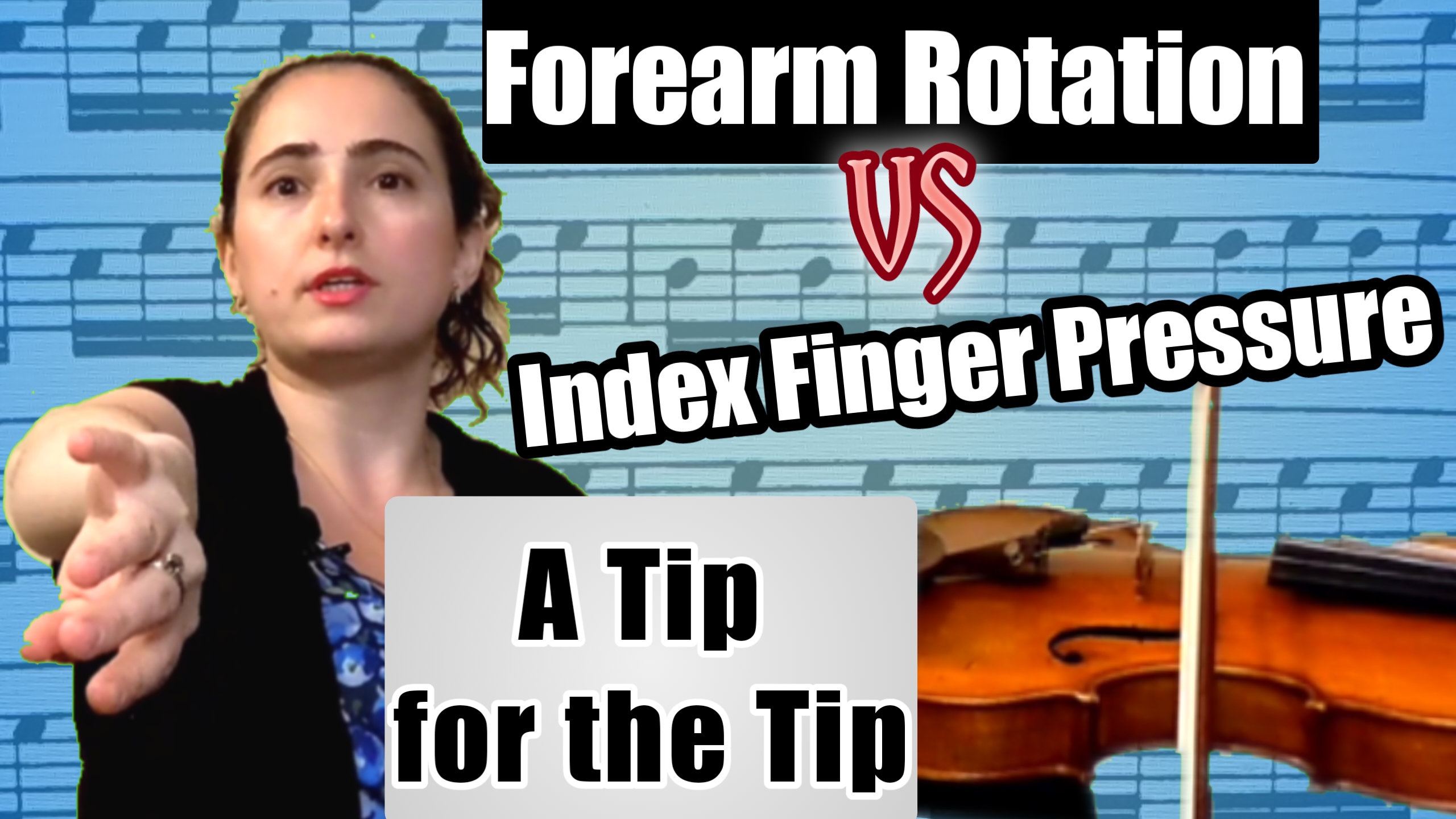
An alternative approach to bow “pressure” involves the entire forearm and using the natural arm weight. Develop beautiful, even sound with more consistency and less effort with these exercises.
To see a VIDEO of this instead (which has more details than the text below, and actual exercises you can apply today) just click HERE:
One of the first skills we learn as beginners is the concept of drawing a straight bow from the frog to the tip. A big challenge that presents itself early on is the fact that the bow weighs much less at the tip. And so, most of our teachers probably taught us to apply pressure to the bow stick with our index finger as we approach the tip. While this helps achieve a satisfactory sound at the tip of the bow, the problem is that applying pressure with the index finger alone can easily lead to tension, as that is a lot of work for one finger! After getting a decent sound at the tip, many players at this point develop a lot of tension in their bow arms, at which point the teachers encourage to relax and slowly work on developing a matching sound at the frog of the bow by removing extra weight.
There are different schools of thought on achieving a beautiful sound. I’ve struggled for many years with inconsistency in my sound but over time I learned 2 important lessons about playing at the tip that stood out and became breakthrough points for me:
1) There are 2 types of “bow pressure.” This is something I learned from Paul Rolland’s books. The first type of pressure is induced by the player onto the bow stick; the second is induced by the bow stick & hair onto the string. The first type doesn’t guarantee direct energy transfer into the second type (which is the one responsible for the sound that comes out of the instrument). The reason for that? If our bow arm is tight while adding pressure, all that natural arm weight turns into wasted energy and the sound gets “trapped” in the shoulder. One possible result of a tight arm is a bow that skids all over the place and has trouble maintaining a good contact point.
2) Natural arm weight and forearm rotation is better than sole index finger pressure. If there’s one physical violin skill I wish I had learned much sooner growing up, it’s the basics of pronation and supination of the forearm. Pronating the forearm when approaching the tip of the bow allows us to use natural weight of our arm without having to push down with the index finger at all. The position of the pronated forearm gets the index finger in the right position to get the job done with very little effort. Conversely, rotating the forearm the other direction (supinating) during an upbow allows for a matching sound at the frog.
This introduction of pronation and supination in early stages can help develop good habits of bowing, reduce excess tension, and give more potential to play with a beautiful sound more consistently. Indirectly, it can help us be much more confident players.1
